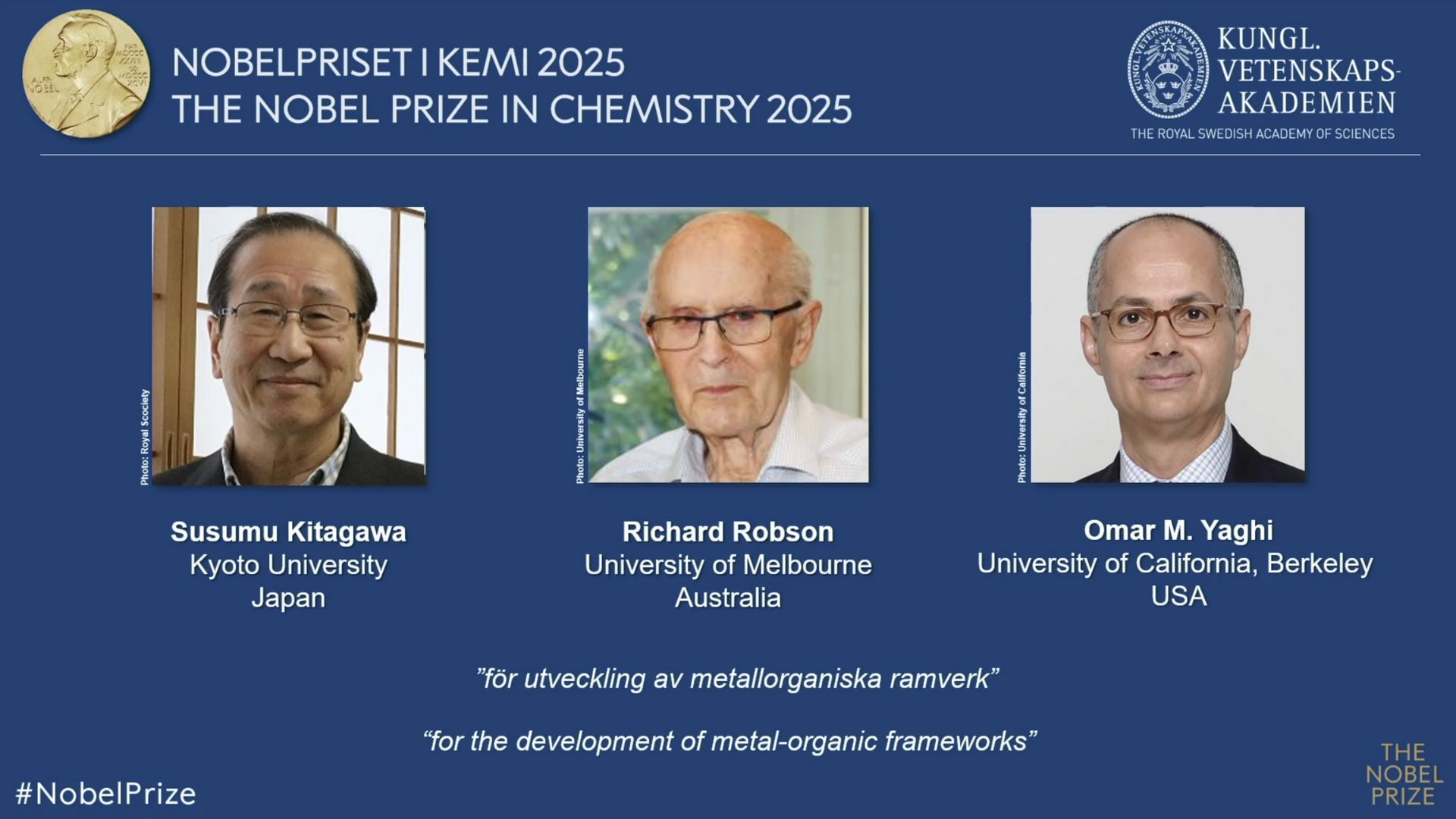New Delhi: The Nobel Prize laureates in chemistry 2025 have developed a novel molecular architecture with large spaces through which gases and other chemicals can flow, called metal-organic frameworks. These metal-organic frameworks have a wide variety of uses including capturing water from dry desert air, sequestering carbon, scrubbing toxic gases from hazardous environments and catalysing chemical reactions. These meta-organic frameworks use metal ions linked by long carbon-based or organic molecules, forming a crystal with large cavities. These porous materials are called metal-organic-frameworks (MOFs). By choosing the building blocks of the MOFs, they can be modified to capture and store particular substances.
The development of MOFs goes back to 1989 when Richard Robson who combined copper ions with chemical groups attracted to copper ions in a unique way, bonding to form well-0rdered spacious crystals, resembling diamonds with cavities. MOFs are self-organising crystals similar to diamonds, but they are not compact, unlike diamonds, and can contain a vast number of cavities with useful properties. The molecular construction was unstable and collapsed easily. Between 1992 and 2003, Susumu Kitagawa and Omar Yaghi independently made a series of discoveries. Kitagawa demonstrated that gas can flow in and out of the MOFs, and predicted that flexible MOFs could be constructed. Yaghi created an extremely stable MOF and demonstrated that it can be modified to provide it with new desirable properties.
A wide variety of applications
Following the groundbreaking discoveries by the scientists, chemists have built tens of thousands of MOFs’ Some of these contribute to the most pressing problems of humanity, including breaking down traces of pharmaceuticals in the environment, capturing carbon dioxide, harvesting water from the air, or clean up polluted water. MOFs can also be used to drive chemical reactions and conduct electricity. Chair of the Nobel Committee for Chemistry, Heiner Linke says, “Metal-organic frameworks have enormous potential, bringing previously unforeseen opportunities for custom-made materials with new functions.”
